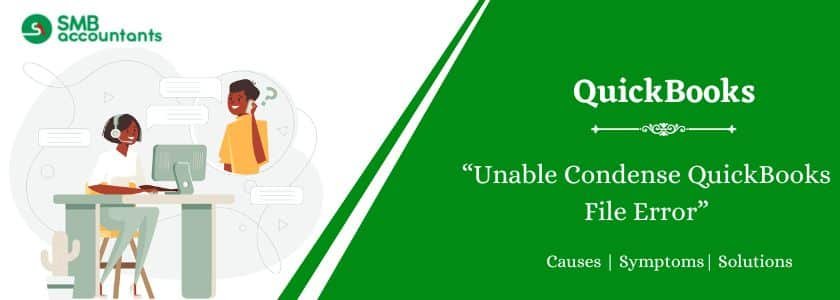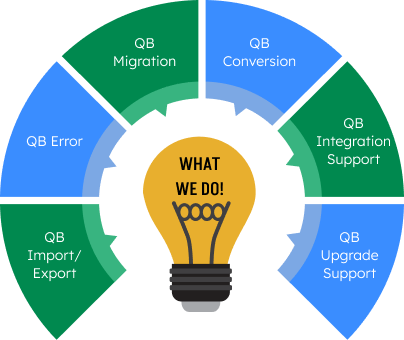QuickBooks is a trusted accounting software used by businesses of all sizes. As companies grow and accumulate more data, their QuickBooks company files can become significantly large, sometimes causing performance issues or triggering file-related errors. One such issue is the QuickBooks Condense Data Error, which typically occurs when users try to reduce file size using the Condense Data Utility tool. If QuickBooks is unable to condense the company file after an update, it may be due to corrupted data, limitations within the tool, or system-related problems.
This comprehensive guide covers what causes the error, how to identify it, and proven solutions to get your file condensed and running smoothly again.
Table of Contents
What Is the QuickBooks Condense Data Error?
The QuickBooks Condense Data Error arises when the software fails to reduce the company file size using the Condense Data Utility. This error can occur after updates, when the file contains negative inventory values, or if damaged transactions exist. Instead of completing the condense process, QuickBooks halts and may display a message like:
“QuickBooks encountered an error while condensing the data. The company file has been restored to its previous state.”
Common Causes of Unable to Condense QuickBooks File Error
Several factors can lead to the inability to condense the QuickBooks company file:
- Negative Inventory Values: Files with negative inventory or quantity on hand can prevent the condensing process.
- Unlinked Transactions: Transactions such as bills, payments, or credits that are not properly linked may interfere with the condensing process.
- Outdated Software: Using an outdated version of QuickBooks or the Condense Data utility can cause errors.
- Damaged Company File: Corrupted data or missing links between transactions can prevent the file from being condensed.
- Payroll Restrictions: Payroll transactions for previous years cannot be condensed unless W-2s are reviewed and finalized.
- Insufficient System Resources: Lack of storage or memory on your device could interrupt the condensing process.
Signs of Condense QuickBooks File Error
Before diving into fixes, watch for these indicators that the condense tool has failed:
- QuickBooks freezes during the condensing process.
- Inability to run or complete the Condense Data Utility.
- Archived data not being created as expected.
- Error messages such as “QuickBooks failed to condense the file.”
- Slow software performance or frequent crashes during file operations.
Limitations of the Condense Data Utility
It’s important to understand what the tool can and cannot do:
- It won’t condense payroll transactions for previous years unless reviewed.
- Unlinked transactions may not be deleted.
- Transactions tied to non-condensable records will remain in the file.
- Undeposited funds and unlinked payments could create issues.
How to Fix Unable Condense QuickBooks File Error?
Solution 1: Resolve Negative Inventory Issues
Negative inventory is one of the biggest culprits behind condense errors. Here’s how to fix it:
- Open QuickBooks Desktop.
- Go to Reports > Inventory > Inventory Valuation Detail.
- Select All Dates from the dropdown.
- Locate any item with a negative value in the “On Hand” column.
- Change the transaction dates so that the bill date is before the invoice date.
- Repeat for all negatively valued items.
Solution 2: Use QuickBooks File Doctor to Repair Corrupted Files
Damaged company files can interrupt the condense process.
- Download and install QuickBooks Tool Hub from Intuit’s official website.
- Launch the Tool Hub and go to the Company File Issues tab.
- Click on Run QuickBooks File Doctor.
- Browse and select the corrupted company file.
- Choose “Check your file” and click Continue.
Solution 3: Run QuickBooks in Safe Mode
Sometimes, third-party applications interfere with QuickBooks operations.
- Restart your computer.
- As it boots, press F8 continuously.
- Choose Safe Mode from the options.
- Once loaded, open QuickBooks Desktop and retry the condense process.
Solution 4: Rename the QBWin.log File
Corrupt log files can cause the Condense utility to fail. Here’s how to refresh them:
- Navigate to:
- C:\Users[Your Username]\AppData\Local\Intuit\QuickBooks\log[Version]\QBWin.log
- Rename the QBWin.log file to QBWin_old.log.
- Restart QuickBooks and run the condense utility again.
Solution 5: Review Transactions Linked to Non-Condensable Data
- Ensure bill payments and credits are properly linked.
- Use the Pay Sales Tax window for all tax-related payments.
- Avoid using checks for sales tax; use the correct module to maintain accurate tracking.
Conclusion
The QuickBooks Condense Data Error is a frustrating yet solvable issue. As company files grow, it’s essential to regularly maintain and clean up your data. Whether it’s adjusting transactions, fixing negative inventory, or using professional tools like QuickBooks File Doctor, there’s always a way forward.
If you continue experiencing errors after multiple attempts, don’t hesitate to visit on smbaccountants.com or Contact Us today to speak with a certified QuickBooks expert. Our team specializes in resolving complex file issues like the Unable to Condense QuickBooks File Update Error.
Frequently Asked Questions
Q 1: Why is QuickBooks unable to condense the company file after an update?
Ans: This usually happens due to data corruption, unlinked transactions, or negative inventory, which the Condense tool cannot process.
Q 2. What is the purpose of the QuickBooks Condense Data Utility?
Ans: It reduces the company file size by removing audit trails and old transactions, improving performance and manageability.
Q 3: Can payroll data be condensed using the utility?
Ans: No, payroll data for the current or prior year cannot be condensed unless W-2s are reviewed and finalized.
Q 4: How do I fix negative inventory to condense my QuickBooks file?
Ans: Change transaction dates to ensure bills precede invoices for affected items using the Inventory Valuation Detail report.



